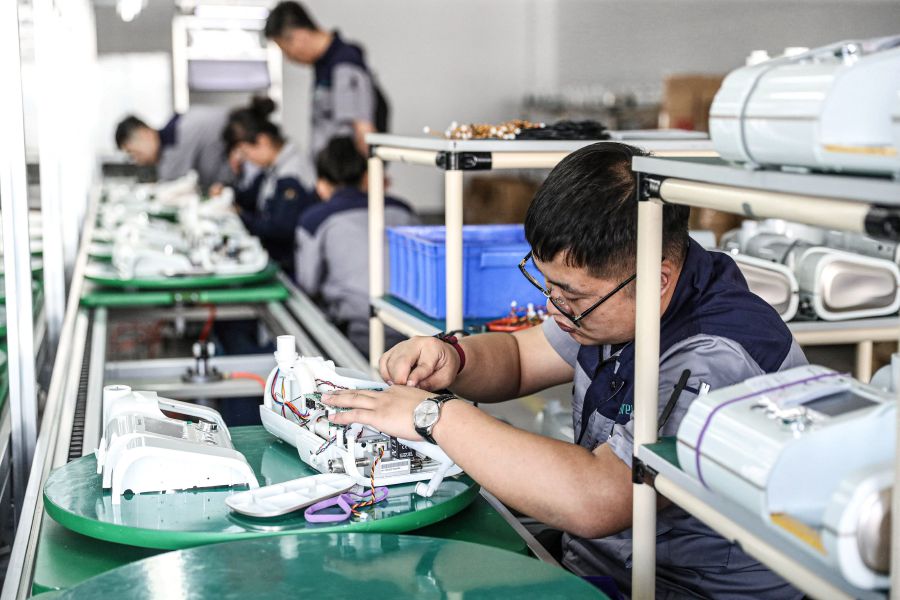AS Covid-19 continues to ravage the global economy, China is emerging from it stronger than ever. China was the only major economy that expanded last year, with its gross domestic product increasing by 2.3 per cent.
In November last year, President Xi Jinping announced that China had eradicated extreme poverty one month ahead of schedule, which he touted as "a miracle" to mark the Communist Party's centenary.
For more than a decade, the world has been keeping a watchful eye on China's growing power. Regardless of Beijing's claims about its superpower ambitions, the decade ahead will see China consolidate its position as a regional, if not global, hegemon. As the world grapples with the challenges of the pandemic, Beijing has been preparing for the transition.
The most notable change in China is the new development paradigm dubbed the "Dual-Circulation Strategy". It entails two economic circulations — the internal and the external — reinforcing each other in a complementary way. The strategy represents Beijing's attempt to balance internationalisation with a greater emphasis on self-sufficiency. Essentially, the domestic economy will now be the main growth driver, shifting away from export-led growth.
To be clear, "Made in China" is here to stay. However, it will no longer be associated with cheap and inferior goods of the past. Instead, the "Made in China 2025" scheme aims to upgrade industries to help China become a technological power. In short, China's economy is only developing in sophistication and the Dual-Circulation Strategy represents a qualitative shift towards high-technology output.
This also means that China's flagship Belt and Road Initiative (BRI) will see major revisions. As a key driver of external circulation, BRI investments will be more disciplined around national economic targets. Where it previously emphasised infrastructure projects, the new direction will focus on high tech, especially in the digital economy and technological innovation.
This dramatic shift in China's economy is largely motivated by the United States trade war. The Trump administration's decoupling from China and the fragile global supply chains exposed by the Covid-19 pandemic have forced China to seek greater self-sufficiency. Such conditions further drive Beijing's ambition to be the most powerful economy in the world.
This shift in China's development will have massive consequences for geo-economics, which will be most deeply felt in Southeast Asia. Although China's domestic economy will be the mainstay now, it will not neglect its external trade as its initiatives abroad are still central to China's success.
As China's backyard, strong trade and political relationships with Asean states will always remain a priority. China will seek to deepen cooperation with Asean states, especially through BRI investments in the tech sector, which is in high demand in the region.
These new aspects of China's economic directions provide risks and opportunities for Malaysia. As a strong BRI partner, Malaysia is set to incur some losses as Beijing shifts attention away from infrastructure projects. On the other hand, the BRI's new high-tech focus aligns perfectly with the demand in Malaysia's tech sector. Specifically, China's focus on technological innovation is exactly what the Malaysian economy needs.
While this represents an opportunity for both Malaysia and the region, closer, co-dependent relations with China may also be incompatible with Asean's independent foreign policy principle. In the past, Beijing has been accused of leveraging the BRI to control Asean states' South China Sea policy. Asean states may continue to hedge, but if external partners do not pay closer attention to Southeast Asia, the region risks falling deeper into the Chinese orbit.
A new economic paradigm like the Dual-Circulation Strategy is the necessary next step for China. For decades, China has been able to maintain an impressive double-digit growth, but economists have long questioned its sustainability. To reach its aspiration as a fully developed socialist country, China must reform its economy from low-end manufacturing to high-end services, and the strategy plans to deliver that. If successful, Beijing's rise to superpower status will be more assured.
The writer is a researcher in the Foreign Policy and Security Studies programme, Institute of Strategic and International Studies Malaysia





